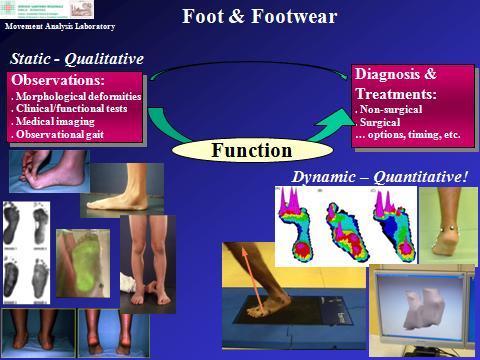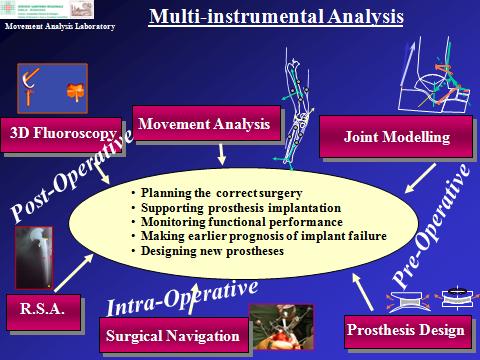Introduction
Keywords: foot biomechanics, foot pathologies, multi-segment foot kinematics, insoles, orthopaedic shoes, ankle-foot orthoses, braces / splints, personalized orthosis, instrumented insoles, diabetic foot, overloading, plantar pressure, industrial boots / safety shoes, podoscope, 3D scanner, 3D printing.
Areas of research:
- Joint Orthosis (foot and ankle, knee, trunk, elbow, wrist)
- Orthopaedic Shoes
- Orthopaedic, functional, and sport insoles
Foot orthotics, such as insoles and ankle-foot orthoses, are special devices for the support, alignment and correction of the foot and lower limb joints. These devices can be made with single or composite materials and can be produced with different technologies. The prescription of the most appropriate foot orthotics requires, first, in-depth assessment of the ailment or pathology that must be addressed in order to restore the normal kinematic alignment of the anatomical segments. Different combinations of technologies and materials can be designed to provide the mechanical solution to the patient’s problems. While traditionally the design of orthotic devices were based on the experience of a few professional technicians, it is now becoming increasingly important to apply the latest technologies for the personalization or mass-customization of the device. Moreover, these devices require highly sophisticated instrumentation and expertise for the objective functional assessment of lower limb biomechanics.

The “Feet & Footwear” technical group, a team of engineers and clinicians within the Movement Analysis Laboratory with strong background in foot biomechanics and foot pathologies, has the whole set of necessary expertise to assess, design and analyse the patients ailment from the diagnosis to the prescription of current devices or design of novel solutions, which can include insoles, shoes, and also rehabilitation and surgical treatments.
The major aims of the group are the following:
- improving the quality of life for the patients (e.g. with flat/cavus foot, diabetic, rheumatic, elderly, paediatric, oncologic, sport professionals and workers);
- advancing the current knowledge on foot biomechanics and pathology, and on the foot/orthotics biomechanical interaction;
- supporting the industry either by assessing current technologies and products, or by devising novel technological solutions.
In addition to standard gait analysis instrumentation, specific tools and devices are employed to assess the kinematics and kinetics of the foot and ankle complex. These include one pressure plate, one podoscope, one 3D foot laser scanner, and all-size 99-sensor instrumented insoles for baropodometric measures. Original methodologies, such as the close integration between pressure and kinematic data, have been originally implemented to improve our understanding of foot biomechanics, in normal and pathological conditions. In addition, custom software have been developed specifically for the automatic and precise analysis and processing of pressure-plate and instrumented-insole measurements.
Some of our past and current activities with industrial partners include:
- baropodometric assessment of military boots;
- thorough functional assessment of forefoot offloading shoes;
- evaluation of single-rocker shoes;
- plantar pressure in personalized insoles for professional soccer players;
- assessment and testing of CLOUD-based technologies for the design of custom-insoles in safety shoes;
- design and test of women high-heel shoes.
Overall, the availability and the ability to work with all these techniques allow to make progresses over the entire process and follow the entire story of the treatment implying medical devices, from the original pre-operative planning, to the assessment of efficacy, up to the design of possible novel devices.

